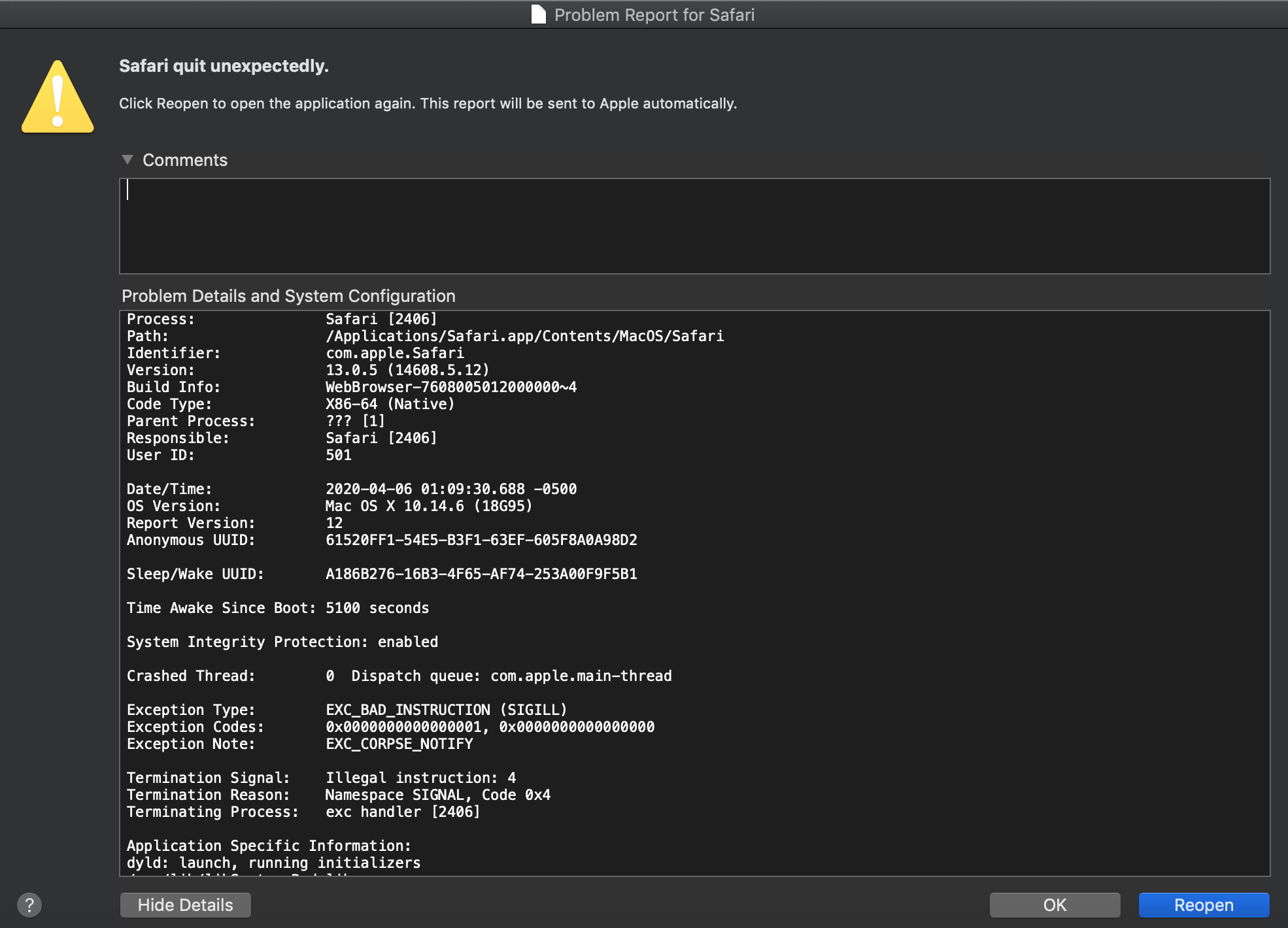FIX: Safari Crashes on StartUp
There is a fairly good chance that at any given point during their use of the Safari browser on an Apple Mac, the average person may encounter an issue where Safari consistently crashes upon startup. As Safari is the default internet browser for Mac computers, the repeated crashing of the program can pose a significant problem. In almost all cases, Safari’s crash on startup is associated with corrupted, damaged, or otherwise compromised program files. The following three solutions have proven to be highly effective in resolving this issue for Mac users who have previously suffered from the problem of Safari crashing upon startup.

Solution 1: Delete certain Safari files from your Library
Quit
Click on the Apple logo in the upper left corner and select Force quit.
In the window that opens, select Safari and click on Return.
Close the window.
Hold down the Option key, and while doing so, click on Go > Library.
Use the Finder menu bar to locate and delete all of the following items from the Library. It is completely okay if some of these items don’t exist in your case.
Caches/com.apple.Safari
Caches/com.apple.Safari.SearchHelper
Caches/com.apple.SafariServices
Caches/com.apple.WebKit.PluginProcess
Caches/com.apple.WebProcess
Caches/Metadata/Safari
Preferences/com.apple.WebKit.PluginHost.plist
Preferences/com.apple.WebKit.PluginProcess.plist
Saved Application State/com.apple.Safari.savedState
Once the items listed above have been deleted, open Safari, and it should no longer crash on startup.
Solution 2: Move certain Safari files out of their default location,
Quit Safari
Click on the Apple logo in the upper left corner and select Force quit.
In the window that opens, select Safari and click on Return,
Close the window.
Hold down the Option key, and while doing so, click on Go > Library.
Please move the following items from the Library folder to an easily accessible destination, such as the Desktop. It’s completely fine if some of the mentioned items do not exist in your case.
The file path is ‘Cookies/Cookies.binarycookies’.
Internet Plug-Ins.
Preferences/ByHost/com.apple.Safari.plist
Preferences/com.apple.Safari.Extensions.plist
Preferences/com.apple.Safari.LSSharedFileList.plist
Preferences/com.apple.Safari.plist
Prefereces/com.apple.WebFoundation.plist
PubSub/Database
Safari (Not the application – a folder named Safari).
SyncedPreferences/com.apple.Safari.plist
Once you have moved the items listed above, all of your Safari extensions will be removed, your bookmarks will be deleted and your settings and preferences will be reset. However, Safari will no longer crash on startup.
If you decide to reinstall the Safari extensions that you lost, make sure to reinstall them one at a time. This prevents the accidental reinstallation of the extension that initially caused your Safari to crash. If you want to restore your lost bookmarks, simply open Safari, go to File > Import bookmarks, navigate to the file named ‘Bookmarks.plist’ in the Safari folder now located on your Desktop (or wherever you moved it), and import your lost bookmarks. Once done, you can delete all items you previously moved.
Solution 3: Delete all the files in the Safari folder in the Library,
Quit Safari.
Go to User > Library > Safari.
Delete all of the files in Safari. Don’t worry, as deleting the files in this folder won’t create additional Safari-related problems. However, be aware that deleting the files in the Safari folder will result in all your bookmarks being deleted and Safari settings and preferences being nullified, then reverted to their factory defaults.